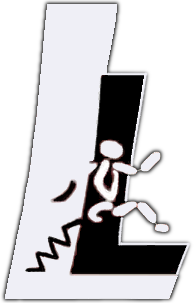Locomotion Laboratory
Since February 2012, the Lauflabor Locomotion Lab has moved to the Sports Institute at the Technische Universität Darmstadt as part of the Sports Biomechanics department. Our research profile comprises experimental studies on humans and animals using state-of-the-art movement analysis techniques, biomechanical and neuro-muscular modeling and the development of technical devices including legged robots and protheses. If you are interested in our research, please find more details on our webpage or contact us.
NEWS
Pick of the month - Concerted control concept in locomotion published in IEEE Transactions on Medical Robotics and Bionics


A new concept termed concerted control is introduced in our recently published paper in the IEEE Transactions on Medical Robotics and Bionics journal titled Concerted control of stance and balance locomotor subfunctions -Leg force as a conductor.
Abstract:
In human locomotion, the complex structure of the human body is controlled such that conceptual models (e.g., the spring-loaded-inverted-pendulum model) can describe the significant features. This suggests that the interplay of the complex control and musculoskeletal systems projects into a low-dimensional space to perform different movements. Such simplification can involve splitting the task into different modular control subproblems (locomotor subfunctions) that can be solved individually. Here, we asked how two locomotor subfunctions, namely stance, and balance, could be coordinated to generate repeatable and robust motor commands. We developed a simple neuromechanical hopping model, based on decoupling axial and perpendicular leg forces. For this, bouncing behaviors and trunk posture control can be addressed by a knee extensor muscle and biarticular thigh muscles, respectively. We suggest utilizing the leg force feedback as interplay among environment, body mechanics, and sensory control to synchronize the decoupled subfunctions. We evaluated this approach in push recovery, attenuating ground drop perturbations and by investigating its sensitivity to the reflex gain as the control parameter. Leg force feedback can improve the robustness of hopping by generating rhythmic hopping patterns. Such a parsimony model-based control concept could simplify controlling assistive devices, such as exoskeletons and prostheses.
Keywords: Locomotor subfunction, positive force feedback, reflex control, sensor-motor map.





